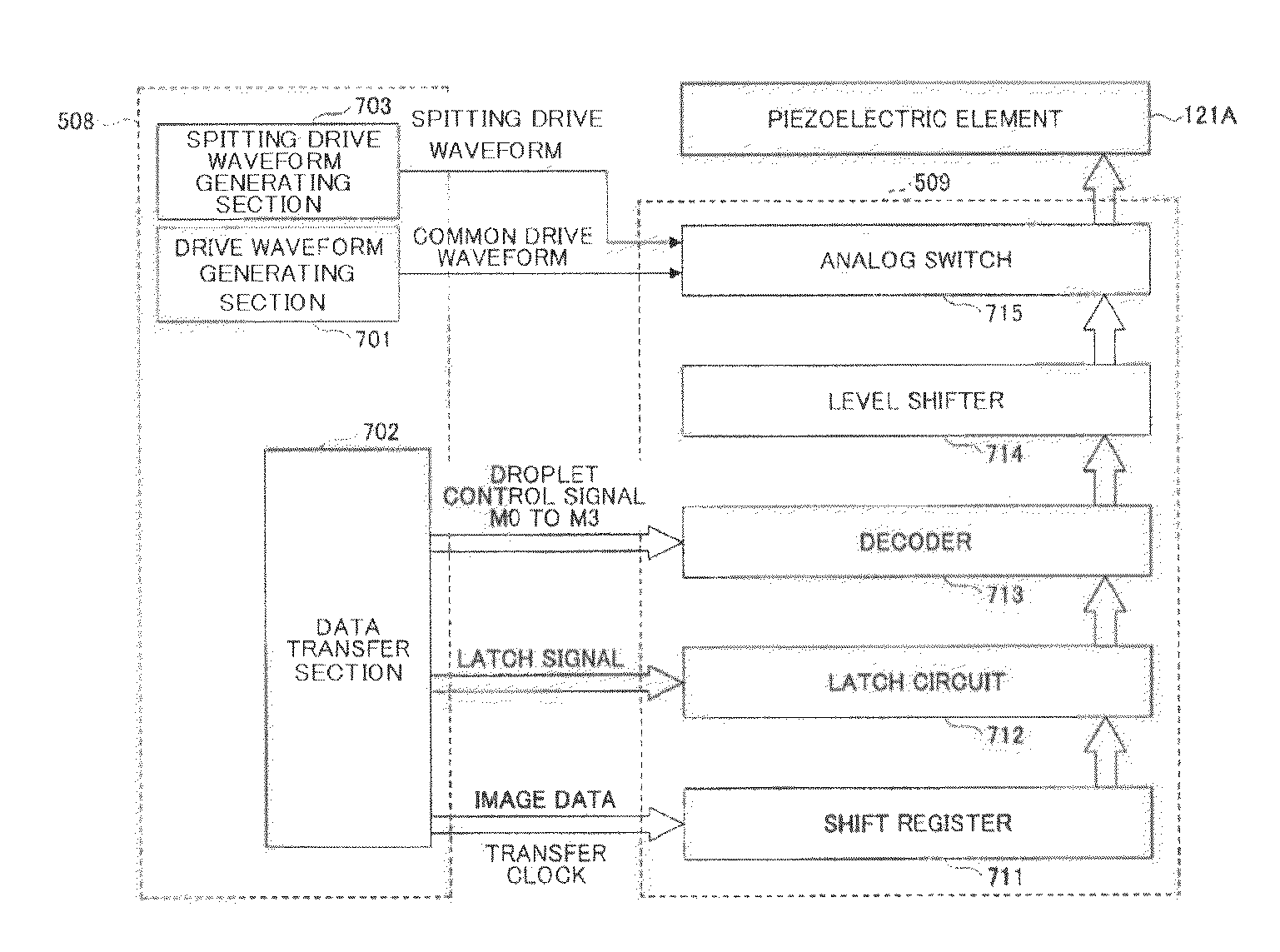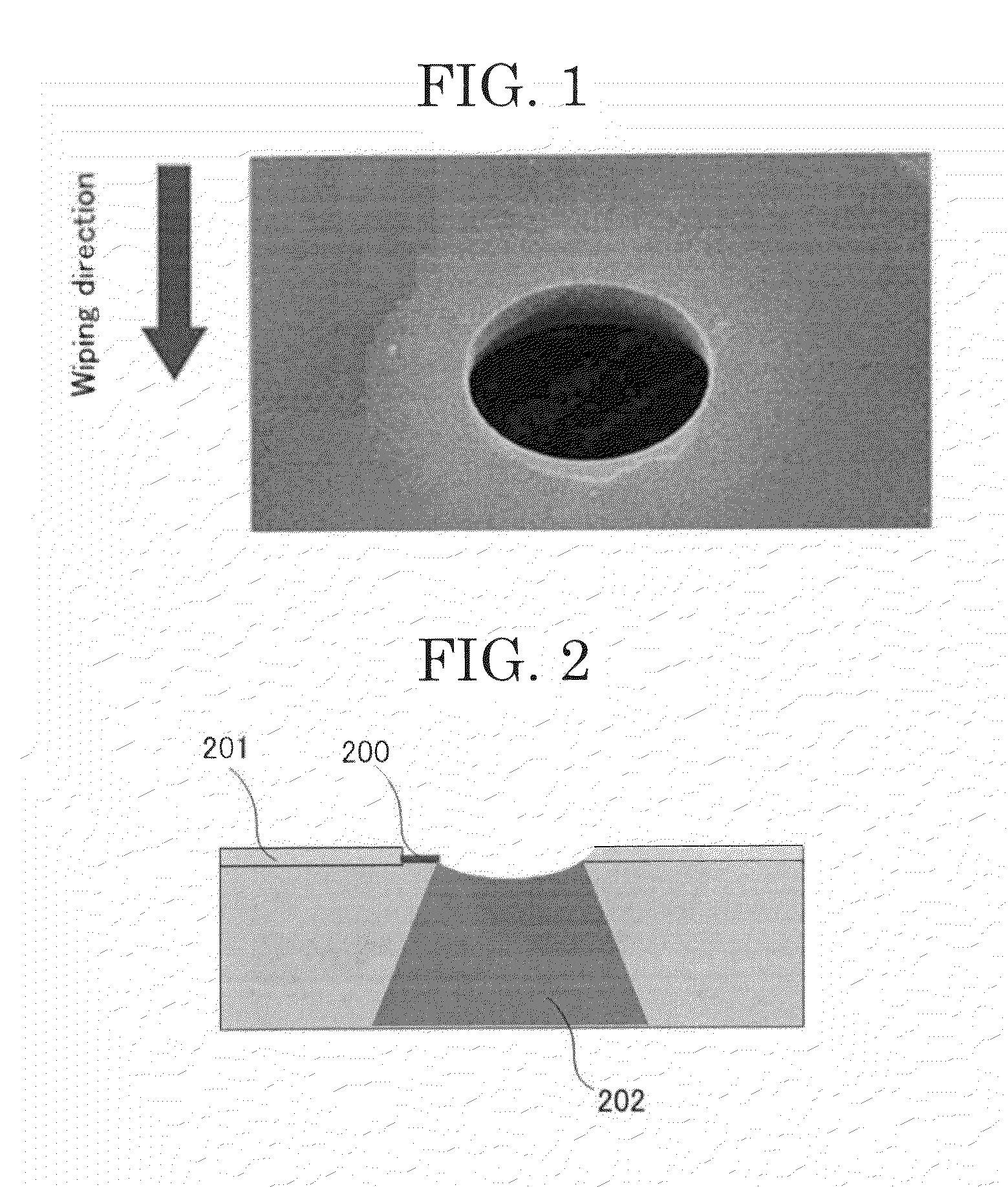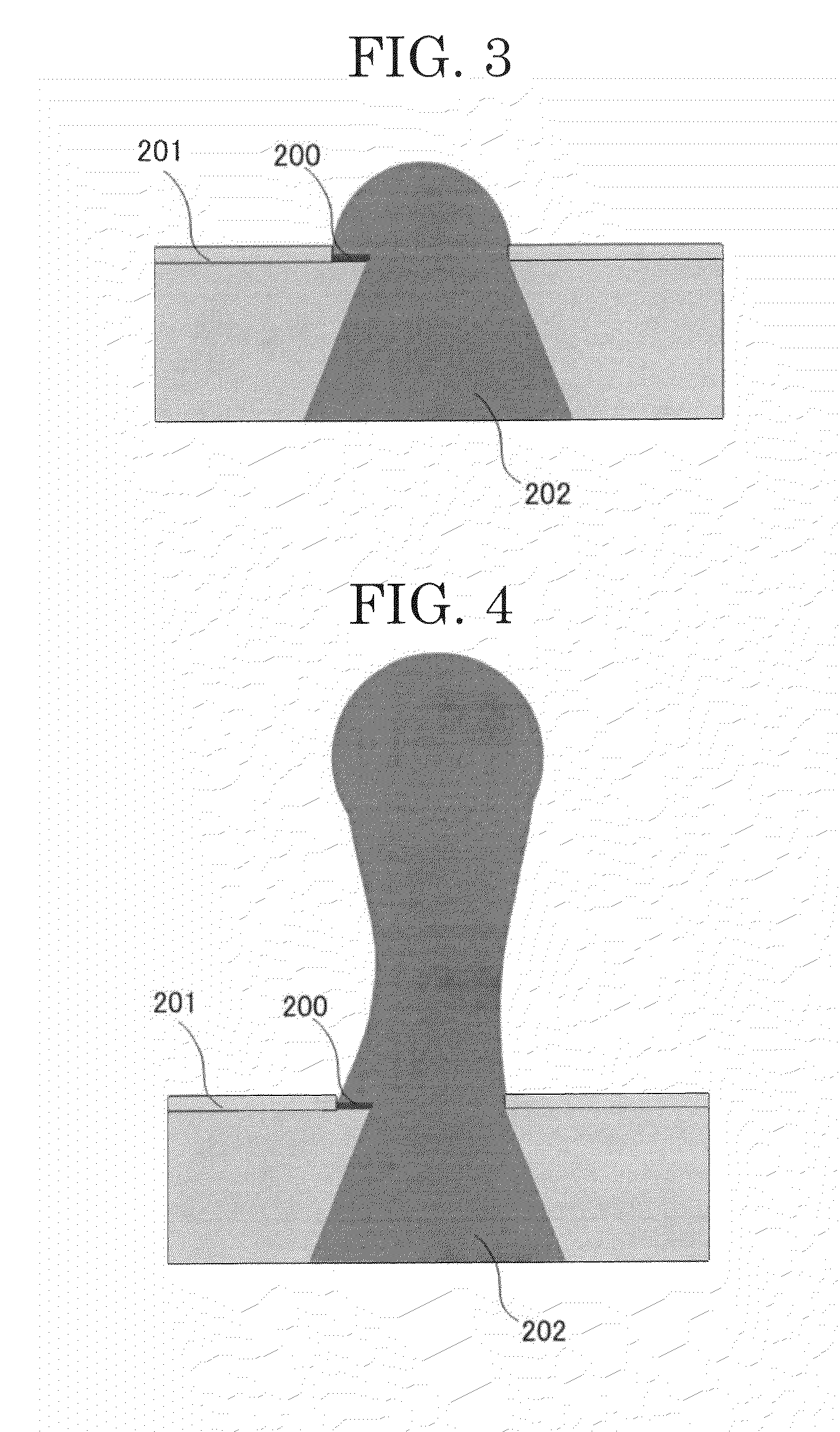Inkjet recording method and inkjet recording device
a recording method and inkjet technology, applied in the direction of duplicating/marking methods, printing, instruments, etc., can solve the problems of clogging the nozzle, deflection of the ejection direction, overflow of ink from the outlet, etc., and achieve the effect of low static surface tension and excellent imag
- Summary
- Abstract
- Description
- Claims
- Application Information
AI Technical Summary
Benefits of technology
Problems solved by technology
Method used
Image
Examples
examples
[0280]Examples of the present invention now will be described, but the present invention is not limited thereto. In the following description, “part(s)” means “part(s) by mass,” unless otherwise stated, and “%” means “% by mass,” unless otherwise stated.
Pigment Dispersion Production Example 1
Preparation of Cyan Dispersion
[0281]A 1 L-flask equipped with a mechanical stirrer, a thermometer, a nitrogen-inlet tube, a reflux tube and a dropping funnel, which had been sufficiently purged with nitrogen gas, was charged with styrene (11.2 g), acrylic acid (2.8 g), lauryl methacrylate (12.0 g), polyethylene glycol methacrylate (4.0 g), styrene macromer (4.0 g) (manufactured by TOAGOSEI CO., LTD., product name: AS-6), and mercaptoethanol (0.4 g), followed by heating to 65° C. Next, a mixed solution of styrene (100.8 g), acrylic acid (25.2 g), lauryl methacrylate (108.0 g), polyethylene glycol methacrylate (36.0 g), hydroxylethyl methacrylate (60.0 g), styrene macromer (36.0 g) (manufactured b...
preparation examples 1 to 20
Ink Preparation Examples 1 to 20
[0293]Ink Preparation Examples 1 to 20 were produced by a routine procedure according to formulations described in Tables 1 to 4 using pigment dispersions produced in Pigment dispersion Production Examples 1 to 4, and adjusted to pH 9 with a 10% aqueous sodium hydroxide solution.
[0294]Specifically, a water-soluble organic solvent, a surfactant, an antifungal agent, a foam inhibitor, a defoaming agent, a penetrating agent, and ion-exchanged water were mixed in this order, following by stirring for 30 min. Then, each of the pigment dispersions produced in Pigment dispersion Production Examples 1 to 4 was added thereto, followed by stirring for 30 min and filtering through a membrane filter (pore diameter: 0.8 μm) to thereby obtain each of Ink Preparation Examples 1 to 20. Notably, the unit of numerical values described in Tables 1 to 4 is “% by mass.”
TABLE 1Ink Preparation Example123456DispersionC40.030.0ProductionExample 1DispersionM50.045.0ProductionE...
preparation examples 101 to 126
Ink Preparation Examples 101 to 126
[0338]Ink Preparation Examples 101 to 126 were produced by a routine procedure according to formulations described in Tables 8 to 12 using pigment dispersions produced in Pigment dispersion Production Examples 1 to 4, and adjusted to pH 9 with a 10% aqueous sodium hydroxide solution. Notably, the unit of numerical values described in Tables 8 to 12 is “% by mass.”
[0339]Specifically, a water-soluble organic solvent, a surfactant, an antifungal agent, a foam inhibitor, a defoaming agent, a penetrating agent, and ion-exchanged water were mixed in this order, following by stirring for 30 min. Then, each of the pigment dispersions produced in Pigment dispersion Production Examples 1 to 4 was added thereto, followed by stirring for 30 min and filtering through a membrane filter (pore diameter: 0.8 μm) to thereby obtain each of Ink Preparation Examples 101 to 126.
TABLE 8Ink Preparation Example101102103104105106DispersionC45.042.0ProductionExample 1Dispers...
PUM
| Property | Measurement | Unit |
|---|---|---|
| contact angle | aaaaa | aaaaa |
| static surface tension | aaaaa | aaaaa |
| receding contact angle | aaaaa | aaaaa |
Abstract
Description
Claims
Application Information
 Login to View More
Login to View More - R&D
- Intellectual Property
- Life Sciences
- Materials
- Tech Scout
- Unparalleled Data Quality
- Higher Quality Content
- 60% Fewer Hallucinations
Browse by: Latest US Patents, China's latest patents, Technical Efficacy Thesaurus, Application Domain, Technology Topic, Popular Technical Reports.
© 2025 PatSnap. All rights reserved.Legal|Privacy policy|Modern Slavery Act Transparency Statement|Sitemap|About US| Contact US: help@patsnap.com



